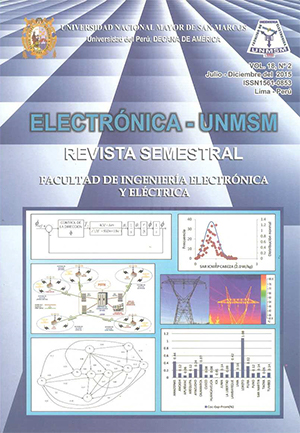Sistema de Control de la Posición Cartesiana y Dirección de un Robot Móvil con Tracción Diferencial
Palabras clave:
tracción diferencial, modelo cinemático, modelo dinámico, punto de equilibrio, orientación, posiciónResumen
Se desarrolla el análisis del modelo dinámico de un robot de tracción diferencial y en base a ese modelo, combinado con su modelo cinemático, se plantea una estrategia de control, para que el robot desarrolle trayectorias desde una posición de equilibrio inicial hacía otra posición de equilibrio final deseada. Se plantea lograr el objetivo en el desplazamiento del robot, dividiendo esa labor en tres tramos secuenciales, durante los cuales sólo se active un solo controlador a la vez. Estamos refiriéndonos a dos controladores en el sistema supervisor, uno de control de la dirección del robot y otro controlador de la distancia recorrida por el robot. En un primer tramo, el controlador de dirección cambiará la dirección del robot desde la inicial a una dirección intermedia; esa dirección debe ser la que debe tomar el robot para que se desplace en línea recta a la posición cartesiana deseada. Luego el controlador de distancia del robot, desplazará a este una distancia adecuada para posicionarlo en el punto cartesiano deseado y finalmente el controlador de dirección, orientará al robot a la dirección deseada.Descargas
Publicado
Número
Sección
Licencia
Derechos de autor 2015 Bruno Vargas Tamani

Esta obra está bajo una licencia internacional Creative Commons Atribución-NoComercial-CompartirIgual 4.0.

La revista Electrónica - UNMSM de la Facultad de Ingeniería Electrónica y Eléctrica de la Universidad Nacional Mayor de San Marcos, Lima, Perú se distribuye bajo una Licencia Creative Commons Atribución-NoComercial-CompartirIgual 4.0 Internacional.
Basada en una obra en http://revistasinvestigacion.unmsm.edu.pe/index.php/electron/index.
LOS AUTORES RETIENEN SUS DERECHOS:
a. Los autores retienen sus derechos de marca y patente, y tambien sobre cualquier proceso o procedimiento descrito en el artículo.
b. Los autores retienen el derecho de compartir, copiar, distribuir, ejecutar y comunicar públicamente el articulo publicado en la revista Electrónica - UNMSM (por ejemplo, colocarlo en un repositorio institucional o publicarlo en un libro), con un reconocimiento de su publicación inicial en la revista Electrónica - UNMSM.
c. Los autores retienen el derecho a hacer una posterior publicación de su trabajo, de utilizar el artículo o cualquier parte de aquel (por ejemplo: una compilación de sus trabajos, notas para conferencias, tesis, o para un libro), siempre que indiquen la fuente de publicación (autores del trabajo, revista, volumen, numero y fecha).


